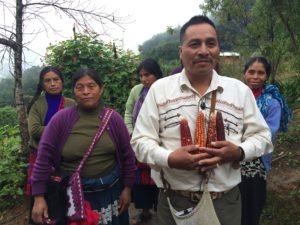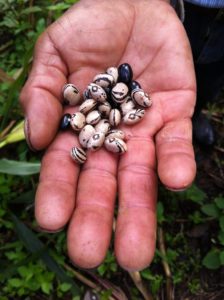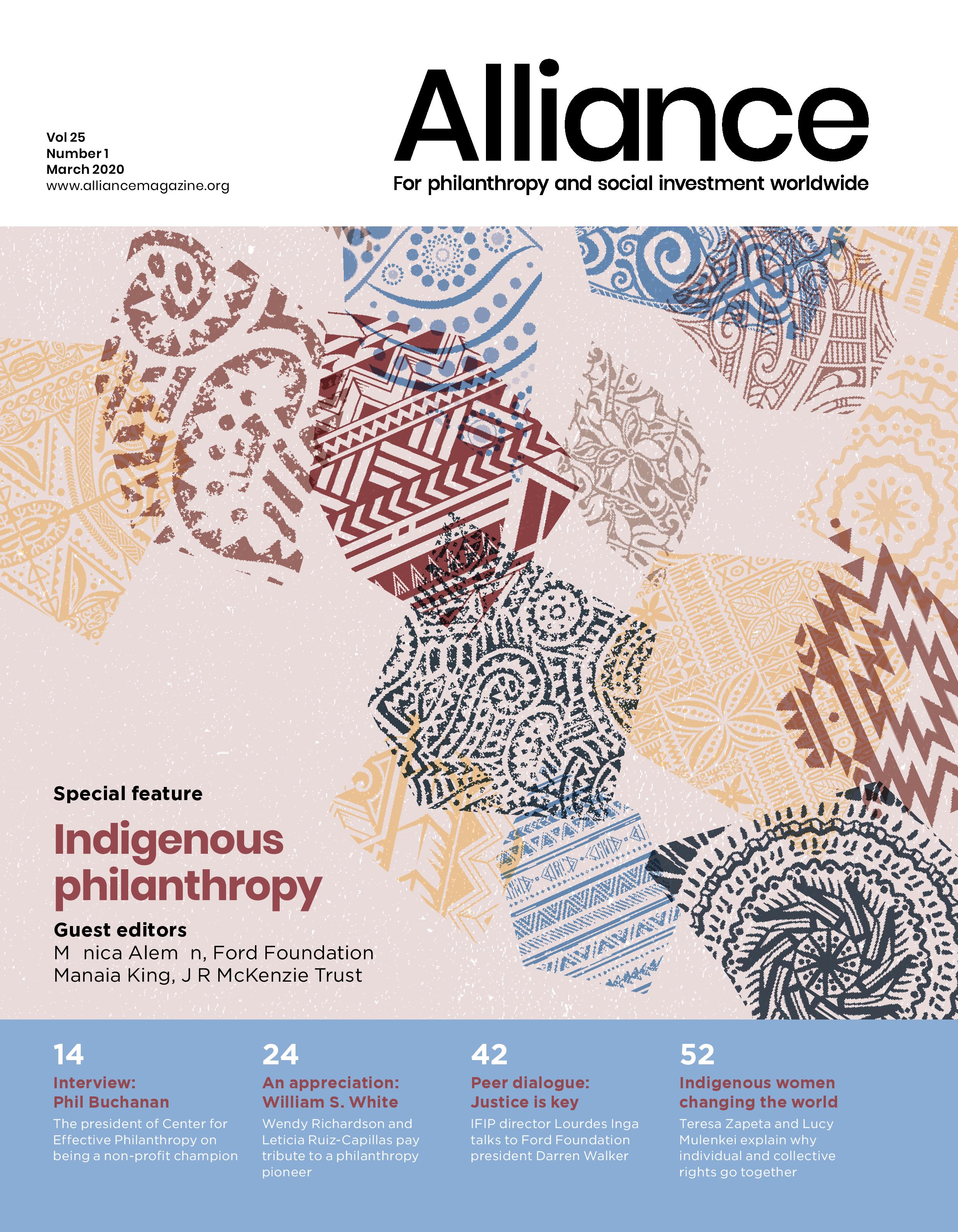Indigenous Peoples’ idea of welfare goes beyond the material – often encapsulated in Latin America in the notion of buen vivir. The role of engaged funders is to embrace this, and to have a long-term commitment to partnerships rooted in dialogue and trust
In 2008 the W K Kellogg Foundation undertook an in-depth review of its mission and vision, which also led to a review of its programmes. From this, a focus emerged on vulnerable children, racial equity and a place-based approach.

Conserving Native seeds in Chiapas, Mexico. Photo: Nikole Okai, Ford Foundation
The highlands of Chiapas and the inner lands of the Yucatan Peninsula, territories of the Tseltal, Tsotsil and Maya Peoples, were the two regions in Mexico chosen to pursue this interest in partnering with communities and promoting comprehensive development under a racial equity approach. Indigenous Peoples were chosen because they are more vulnerable, and face discrimination and constant struggles for survival to a greater degree than non-Indigenous populations.
What they also have are a lot of social capital, deep-rooted community networks, a strong sense of solidarity, profound and valuable knowledge and models of sustainable practices and resilience.
Among our partnerships is that with Indigenous grassroots organisation, Ka Kuxtal Much’ Meyaj[1]. Six years into this partnership, here are some joint takeaways from the experience:
Find common ground. As easy as it sounds, this requires dedicating time to know each other, and learn, not pretend to know everything. This also means identifying the connections between each other’s missions, as well as the intentions and values of the people involved.
Be honest about each other’s interests and possibilities and don’t be tempted to appropriate from others’ successes.
Commit to horizonal relationships. When we allow each other to be present, and be part of the conversation as ourselves, we are able to create together, promote spaces for exchange with a focus on the vision and cosmogony of Indigenous Peoples.
Focus on the territory and what is meaningful for the people and what centres their identity.
Have a systemic approach. Understand and recognise intersectionalities, and the diversity of Indigenous Peoples, and be open to approaches that prioritise well-being beyond economic outcomes and production indicators.
Build and honour trust. At the end, it all comes down to building a respectful and trusting relationship, based on dialogue and flexibility.
Together we’ve built a collaboration to strengthen the Mayan Seeds Guardian Network, which helps to conserve, celebrate and defend native seeds, agro-food systems and territory. This process connects the work of farmers and Indigenous and peasant organisations, and has expanded to include more collectives from the south and south-east of Mexico; and it has grown as a local and regional movement’s response to the need for pertinent agricultural practices, incorporating a long-term vision and consideration for identity, spirituality and sense of community. If Peoples are spiritually well, they have more strength to defend their territories, their sovereignty and their way of achieving buen vivir.

Photo: Nikole Okai, Ford Foundation
However, barriers remain. First, we need to ensure that funding actually gets into the hands of Indigenous organisations, leaders or communities, and not only through the usual intermediaries, who sometimes have different priorities and goals from those of communities. Second, we face challenges to ensure our grantmaking processes are adequately targeting Indigenous organisations and that our requirements don’t represent more barriers to their access to funding.
Third, we have not yet found mechanisms to ensure that the evaluation and monitoring processes incorporate the vision of Indigenous Peoples, which would allow us to measure the impacts in more pertinent ways, taking into consideration what success means for them. We would like to reach a position where evaluation can be contextualised and consistent with Indigenous people’s values and aspirations so they reflect communities’ impact on children’s well-being more appropriately. Fourth, we need to fund more Indigenous grassroots organisations. We need to commit with their priorities and facilitate further connections. We need to go beyond funding specific actions and support the strengthening of their networks or movements. A final challenge is understanding both the short- and long-term problems communities face. We need to partner with both in their responses to urgent needs and, at the same time, support them to eliminate systemic barriers that reproduce the issues and challenges they face.
Thus, we work at different levels, with a long-term commitment, connecting with organisations doing similar work so that we can learn and emerge strengthened, and help create spaces for constant growth and which favour the formation of networks and collaborations that can truly be allies for Indigenous Peoples.
Nora Tzec is director of Ka Kuxtal Much’ Meyaj.
Email noratzec73@gmail.com
Twitter @tzec_nora
Verónica Fernández de Castro is programme officer for Latin America and the Caribbean at W K Kellogg Foundation.
Email vfc@wkkf.org
Alejandra Garduño is programme officer for Latin America and the Caribbean at W K Kellogg Foundation.
Email: agm@wkkf.org
Twitter: @WK_Kellogg_Fdn
Footnotes
- ^ Mayan Indigenous organisation based in Hopelchen, Campeche, in the Yucatan Peninsula.



Comments (0)